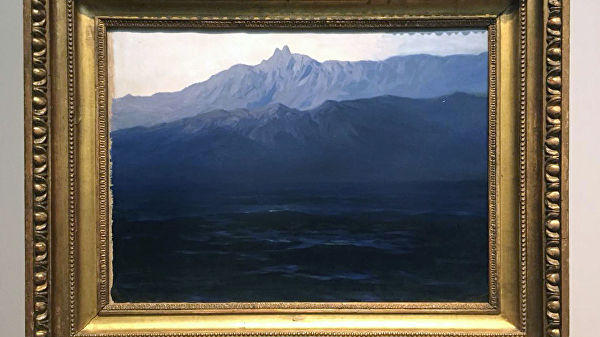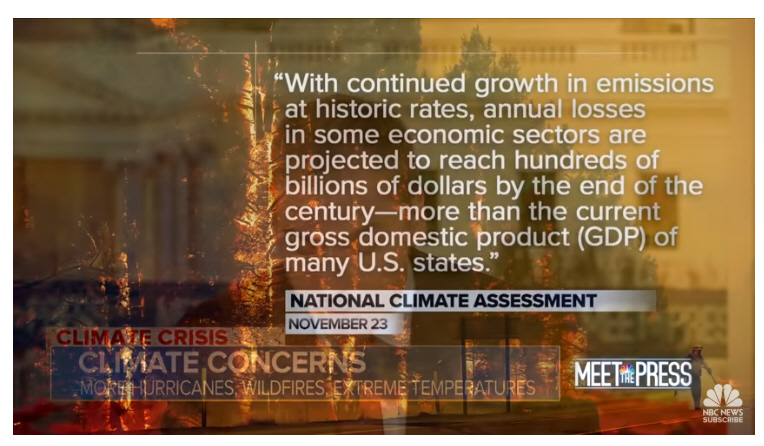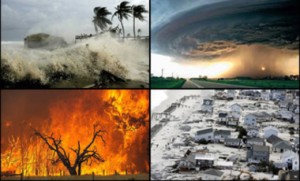 The World Wide Web is celebrating a birthday today. Actually, on this date in 1989, Tim Berners-Lee (now Sir Tim, thank you very much) outlined a somewhat vague proposal for a new electronic information-sharing protocol.
The World Wide Web is celebrating a birthday today. Actually, on this date in 1989, Tim Berners-Lee (now Sir Tim, thank you very much) outlined a somewhat vague proposal for a new electronic information-sharing protocol.
But seeing as how the web is (ideally) a cybernetic agora of thoughts and ideas, then it makes sense to celebrate its conception as its date of birth.
To say that the internet and all its convolutions and offshoots have changed everything is so self-evident, I feel silly for typing the words. We all know it, no matter how ubiquitous information-sharing has become. Those of us who came up before this thing took over remember how different life used to be, and we won’t shut up about it. Those who have grown up in this brave new world have to listen to that—a lot. It’ll be a generation, maybe two, before the internet seems as timeless and invisibly normal as television has since the ’60s or so.
So the question isn’t really how much Sir Tim’s baby changed us, it’s whether those changes are, on balance, for the best.
I’ve wrestled with this. Most days the answer seems pretty clear—I perform my day job largely online. I write, blog, hustle, and side-gig likewise online. I see something shiny, I click, and it’s Amazon-Prime’d to me in hours, not days. At times like these I bless Berners-Lee’s name, and I’d knight him again myself if I could.
Then there are those other times. My connections are glitchy, so I can’t work or side-hustle and I realize, horribly, that I have no alternative tech to get the job done. Or I’m hacked or have some data stolen—it’s happened to all of us by now, hasn’t it?—and I stomp and roar because I didn’t sign up for this and it shouldn’t be happening.
But it is. Hate proliferates online. Elections are stolen. Misinformation spreads and grows sticky, and works its way into collective consciousness.
And even worse. Ever venture downstairs to the Dark Web? Do so at peril to your sanity; it’s ugly down there. It’s supposed to be some anonymous, libertarian Eden…but it’s largely what you’d expect when libertines can be anonymous and they can (largely) dodge repercussions. They’re selling guns, drugs, and people there, and it’s all enabled by the same concepts and infrastructure that gave us Nyan Cat.
I’ve wondered, more than once, if we all wouldn’t be better off if we just shut the damn thing down (isn’t there a big red button in Sir Tim’s basement?), and we schlepped back into the analog. But that’s fantasy, right? This genie has gorged, and its big ass won’t fit back in the bottle.
So what have we got? Well, we’ve still got Tim Berners-Lee. He’s marking this anniversary by calling for a new international compact to address the worst ways in which our mutual connectivity is being abused. He’s got some good ideas, as he’s always had, and we can only hope they’ll gain some traction.
Because yes, this thing is here to stay. Best we hope for is that it goes back to being a blessing, somehow, and stops being such a burden.
 Imagine if you will an algorithm, an AI, employed in the creation of chimerical floral forms—all as a dual exegesis on one of the world’s first economic bubbles, and one of its most recent.
Imagine if you will an algorithm, an AI, employed in the creation of chimerical floral forms—all as a dual exegesis on one of the world’s first economic bubbles, and one of its most recent.
 The 2020 presidential field is already crowded, and growing ever more so, so it’s probably far too early for any earnest handicapping. Even a modest “meet the candidate” effort becomes a frantic two-step, with more hopefuls announcing, forming exploratory committees, or being speculated upon and about, by the hour, by the day.
The 2020 presidential field is already crowded, and growing ever more so, so it’s probably far too early for any earnest handicapping. Even a modest “meet the candidate” effort becomes a frantic two-step, with more hopefuls announcing, forming exploratory committees, or being speculated upon and about, by the hour, by the day.
 Performance art can be a challenge to interpret. By its very
Performance art can be a challenge to interpret. By its very  table is prepared for the audience, set with a mountain of homogeneous white crumbs, which they’re invited to sprinkle on the carpet, thus queuing up yet more hoovering chores for “Ivanka.”
table is prepared for the audience, set with a mountain of homogeneous white crumbs, which they’re invited to sprinkle on the carpet, thus queuing up yet more hoovering chores for “Ivanka.” We’ll say it again: we in no way condone
We’ll say it again: we in no way condone  of pilferage, when a man braved a bustling crowd of art lovers and helped himself to a 1908 mountainscape by Russian artist Arkhip Kuindzhi, titled “Ai-Petri, Crimea.” The painting is valued at $182,000. The heist was uncomplicated: the as-yet unidentified man approached the painting, which was not fitted with alarms but was covered by CCTV surveillance, he removed it, and calmly walked off with it. Bystanders barely reacted, and are said to have assumed he was a museum employee. The thief made good his escape, but was later betrayed by a police tip-off, and is currently in custody. He has denied culpability, and says he doesn’t remember where he was on Sunday. The painting has been returned to the museum.
of pilferage, when a man braved a bustling crowd of art lovers and helped himself to a 1908 mountainscape by Russian artist Arkhip Kuindzhi, titled “Ai-Petri, Crimea.” The painting is valued at $182,000. The heist was uncomplicated: the as-yet unidentified man approached the painting, which was not fitted with alarms but was covered by CCTV surveillance, he removed it, and calmly walked off with it. Bystanders barely reacted, and are said to have assumed he was a museum employee. The thief made good his escape, but was later betrayed by a police tip-off, and is currently in custody. He has denied culpability, and says he doesn’t remember where he was on Sunday. The painting has been returned to the museum. As I write this, the ongoing shutdown of the U.S federal government, sparked by a budget impasse over border-wall spending, is in its 26th day. It is the longest government shutdown in history.
As I write this, the ongoing shutdown of the U.S federal government, sparked by a budget impasse over border-wall spending, is in its 26th day. It is the longest government shutdown in history. National Mall), park visitors are unchecked as to their behavior and impact upon the landscape. The damage so far is gut-churning—in addition to overflowing trash bins (not to mention overflowing toilets), there are
National Mall), park visitors are unchecked as to their behavior and impact upon the landscape. The damage so far is gut-churning—in addition to overflowing trash bins (not to mention overflowing toilets), there are  biologically sensitive areas, graffiti damage, and even plundering of protected relics and artifacts in normally restricted areas like New Mexico’s
biologically sensitive areas, graffiti damage, and even plundering of protected relics and artifacts in normally restricted areas like New Mexico’s 
 It’s surely a stellar time (so to speak) to be an alumnus of the legendary arena-rock four-piece
It’s surely a stellar time (so to speak) to be an alumnus of the legendary arena-rock four-piece  back pictures of the Kuiper Belt object
back pictures of the Kuiper Belt object 
 Kudos, respect, and thanks to Chuck Todd and NBC for today’s extraordinary edition of
Kudos, respect, and thanks to Chuck Todd and NBC for today’s extraordinary edition of  I’m just giddy to present here, in its entirety,
I’m just giddy to present here, in its entirety,  an ancient Akkadian folk tale first recorded in
an ancient Akkadian folk tale first recorded in  impoverished goat herder, Gimil-Ninurta, from the Mesopotamian city of Nippur, which flourished during the Sumerian and Akkadian cultures. Gimil-Ninurta attempts to better his fortunes by making a gift of his prized nanny goat to the mayor of the city, but is cheated and insulted, and thrown from the palace. He vows revenge (“Gimil-Ninurta” translates to “Vengeance of the god Ninurta,” one of the patron deities of Nippur), and sets out to lay the mayor low—not just once, but three times (karma compounded). No spoilers here, but if you’re one to root for the little guy, you won’t be disappointed.
impoverished goat herder, Gimil-Ninurta, from the Mesopotamian city of Nippur, which flourished during the Sumerian and Akkadian cultures. Gimil-Ninurta attempts to better his fortunes by making a gift of his prized nanny goat to the mayor of the city, but is cheated and insulted, and thrown from the palace. He vows revenge (“Gimil-Ninurta” translates to “Vengeance of the god Ninurta,” one of the patron deities of Nippur), and sets out to lay the mayor low—not just once, but three times (karma compounded). No spoilers here, but if you’re one to root for the little guy, you won’t be disappointed. died in October of 1985. His last film,
died in October of 1985. His last film,  scene in which he’s inexplicably arguing why “it’s not my movie.” His character is unnamed and is never seen again.
scene in which he’s inexplicably arguing why “it’s not my movie.” His character is unnamed and is never seen again. never really intended to finish it—maybe he just wanted to keep filming until he died. If so, he got his wish. But if so, he’d be sorely irritated with what Netflix has cobbled together.
never really intended to finish it—maybe he just wanted to keep filming until he died. If so, he got his wish. But if so, he’d be sorely irritated with what Netflix has cobbled together.

 Since the first Climate Assessment Report was completed in 1990, the interagency panel has warned that increasing global temperatures will lead to drought, wildfires, more frequent and more destructive oceanic storms, coastal flooding, mass migrations of climate refugees, conflicts over disappearing land and resources, and increasing risks to every foundation of civilization itself.
Since the first Climate Assessment Report was completed in 1990, the interagency panel has warned that increasing global temperatures will lead to drought, wildfires, more frequent and more destructive oceanic storms, coastal flooding, mass migrations of climate refugees, conflicts over disappearing land and resources, and increasing risks to every foundation of civilization itself. France itself gave us the Paris treaty, but is as we speak roiled by the so-called “yellow vest” protests, a response by drivers and low-income workers to onerous fuel taxes designed to drive down carbon consumption. One protester was just quoted as saying that the taxes were imposed by those concerned with the end of the world. “We’re just worried about getting through the end of the month,” he said. It’s a point that’s hard to contest.
France itself gave us the Paris treaty, but is as we speak roiled by the so-called “yellow vest” protests, a response by drivers and low-income workers to onerous fuel taxes designed to drive down carbon consumption. One protester was just quoted as saying that the taxes were imposed by those concerned with the end of the world. “We’re just worried about getting through the end of the month,” he said. It’s a point that’s hard to contest.
 When I was about nine years old, I had the privilege of meeting an American veteran of World War I. I’m not sure I realized then what a privilege that was, but I think I knew it was quite unusual. This would have been the late seventies, there were plenty of Second World War veterans about, hitting their upper middle ages around then, but I believe I was aware that this elderly gentleman visiting our fourth-grade class was the only I’d met who’d lived through that first Great War. I doubt I would have foreseen this, but as it happened, he was to be the only such veteran I’d ever speak with.
When I was about nine years old, I had the privilege of meeting an American veteran of World War I. I’m not sure I realized then what a privilege that was, but I think I knew it was quite unusual. This would have been the late seventies, there were plenty of Second World War veterans about, hitting their upper middle ages around then, but I believe I was aware that this elderly gentleman visiting our fourth-grade class was the only I’d met who’d lived through that first Great War. I doubt I would have foreseen this, but as it happened, he was to be the only such veteran I’d ever speak with. I voted today. Could’ve done it earlier; could’ve dodged the crowds, could’ve filled out a ballot at home and mailed it in at my leisure. These are valid choices, and if they were yours I salute them and you.
I voted today. Could’ve done it earlier; could’ve dodged the crowds, could’ve filled out a ballot at home and mailed it in at my leisure. These are valid choices, and if they were yours I salute them and you.